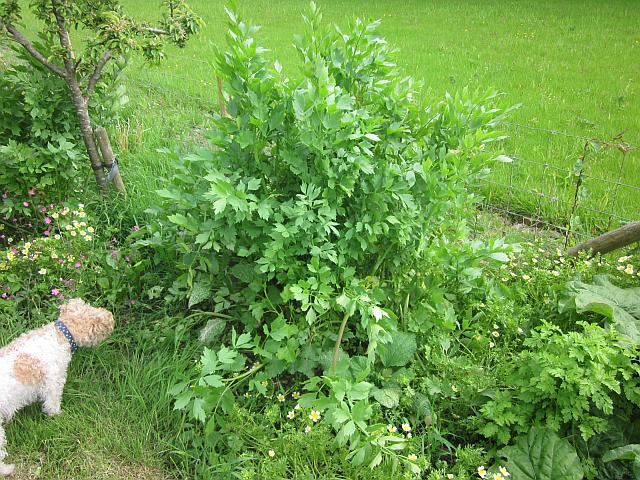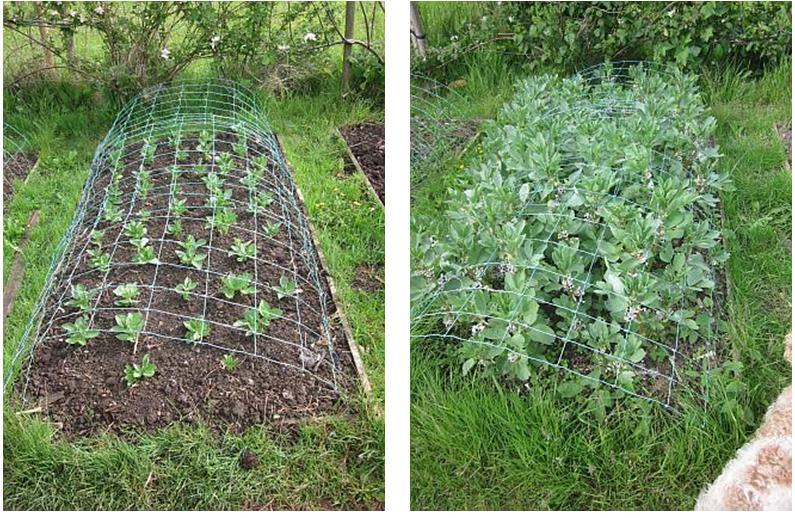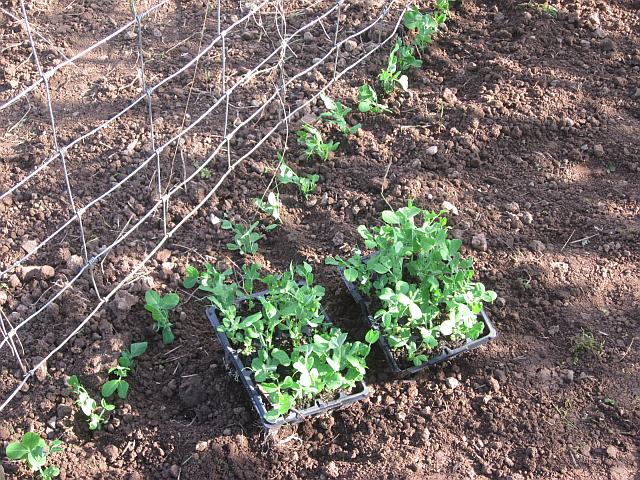Produce No Waste
One of the
permaculture design principles is '
produce no waste'. Waste is either an unused resource
that should be used or else some noxious substance that is being
discarded in order to make sure that it injures someone else and
not yourself.

My new neighbour is not a permaculturalist as you can see by
this picture of his garden. Last month he brought in a
ride-on mower and cut his grass. He piled the mowed grass up
and tried to set fire to it. This was waste on both counts as
he was not only throwing away a nutrient resource but polluting the
atmosphere with smelly smoke.
I offered to take his waste and compost it. I suppose I
quite often offer to take on things other people throw away.
My neighbour's reaction was initially a very common one. He
seemed to think that I was perhaps trying to rob him. Maybe I
was selling it on ebay?
This month he cut over a cubic metre of grass and offered it to
me. It had already started to ferment. I had to quickly
construct a container for it. It's the best grass of the year -
full of protein. Very hot inside the pile. I wish I could
generate electricity from it but that's for the future.
Lovage
Lovage lurks
Triffid like at
the back of the garden. I sowed it as seed about 5 years ago,
meaning to expand my range of herbs in the garden. The plant
succeeded but I must admit that I hardly ever use it. My
Romanian former-neighbour used to take armfuls of the spring growth
to freeze. Apparently in eastern Europe it is widely used
instead of parsley in soups and stews. I find it a bit too
bitter. Hugh Fearnley-Wearnley
describes its flavour as 'parsley and celery combined with a
hint of aniseed and curry'. I think I find its foetid smell
off-putting as it reminds of harmful umbellifers such
as wild
parsnip.

The plant itself can be invasive in the garden. It grows tall
and spreads wide, shading out other plants. It dies back at
the first frost but creates a big fleshy root that enables it to
return vigorously next spring. The best place for it is some
relatively dry, slightly shaded spot at the back of the garden
where it won't be a nuisance. It can certainly be a striking
feature of the garden.
Broad Beans
The first broad beans
(known as fava beans in the U.S.) are nearly ready to pick.
Good to get then young and tender. Generally broad Beans are
sown in October and November (usually variety Aquadulce) and
overwintered or else sown in early spring. I have found that
overwintered beans don't do well here. Wind, rain and pigeons
take their toll. I sow broad beans in modules in the
polytunnel in the last week of January and then more in the last
week in February. The February ones nearly catch up the January
ones. Mice are a big pest at this time of year for peas and
beans. As you can see from the photos, when I plant them out
I cover them with stock fence! This is a very convenient way
of protecting them from pigeons in my 4 foot wide raised
beds. I've found that I can leave the fencing over the beans
throughout their life as it is perfect as a way of stopping them
getting blown about. There is a species of aphid that can
ruin a broad bean crop but I don't get it here. Autumn sown
beans are supposed to be more resistant.

A small, hard shelled version of the broad bean is known as the
field bean. I've certainly eaten it as a poor student but it
is also sown as a
ground covering green manure and, being a legume and very
hardy, is useful for increasing soil fertility over the winter.
If you find broad beans to be a bit fibrous and tough for you,
particularly if they're getting a bit old, then you can 'double-pod'
them - i.e. parboil the beans and then slip them out of their shell
and cook them again. Another interesting use is broad
bean hummus.
Broad beans can be frozen but this is probably not the best use
of your freezer space.
A bed of broad beans that is harvested now can then planted up
with summer salad crops or maybe leeks to overwinter.
Sowing in Modules
Nearly all of my seeds are sown in plastic modules, rather than
directly into the ground. Modules, which can be indoors,
allow you start sowing seeds earlier than you would outdoors.
They also give a higher germination rate. Seeds can be
transplanted out when the plants, weather and the ground are
ready. It's very satisfying to look at a full row of plants.
The only disadvantage is the extra work involved in
transplanting. Some crops, like parsnips, do not transplant
well at all and theses are sown directly into the ground.

The modules that I use are Plantpak or Plantcell 12
and 20. They are the size of half a seed tray. Tuckers
of Crediton certainly used to sell them at about 15p each and with
reasonable care they can be reused. They are not sold by all
garden centres but can be bought online.